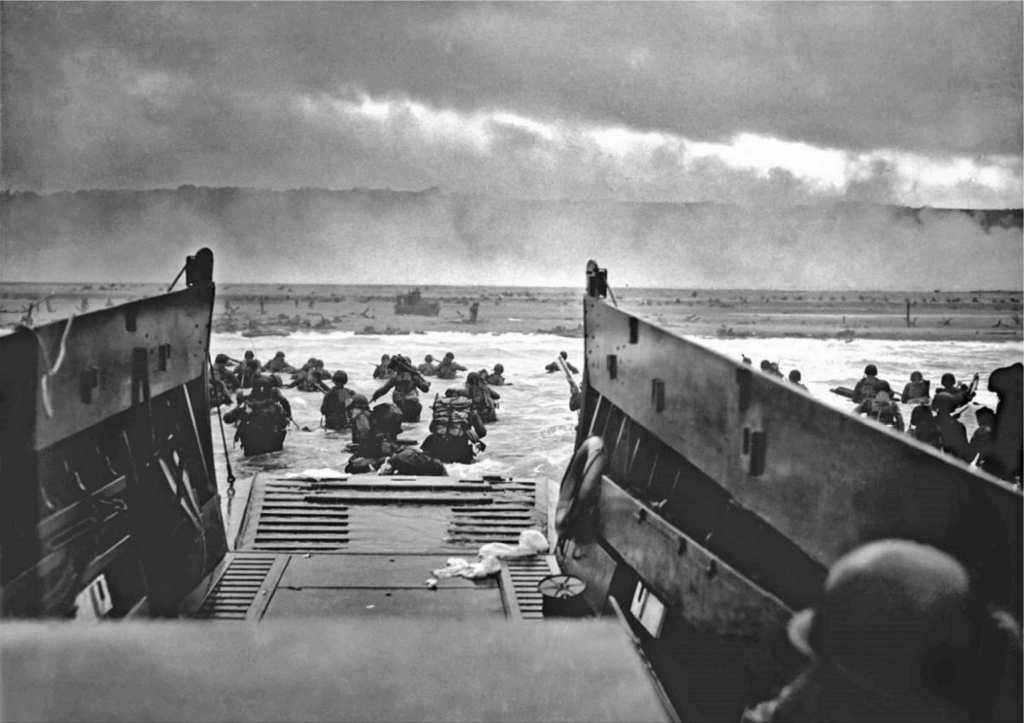D-Day
D-Day is observed next on Saturday, June 6th, 2026 (143 days from today).

D-Day is observed in the United States in memory of the Normandy landings in France on June 6th, 1944, in which American soldiers and other Allied forces fought to end World War II in Europe.
History of D-Day
Beginning in the spring of 1940, in the midst of World War II, Nazi Germany began to occupy northern France. They gained full control of the area in May, when the British evacuated Dunkirk, a coastal city, during the Battle of France. But the Allies always hoped to return. In 1942, the United States and Great Britain began to think of an invasion of the English Channel. Hitler, predicting an invasion somewhere - although he did not know exactly where - placed Erwin Rommel in charge of the defense of a large coastal region and in charge of the creation of the Atlantic Wall, including bunker fortifications, mines, and other beach and water obstacles.
The Allies code-named their amphibious invasion of Normandy "Operation Overlord", and placed General Dwight D. Eisenhower in command of it in January 1944. The invasion became known as D-Day, and its implementation would prove to be the beginning of the end of war. The more obvious choice for invasion was Pas de Calais, which was the shortest distance between England and Continental Europe. In fact, a pre-D-Day deception campaign led the Germans to think that Pas de Calais as well as Norway and several other locations - would be areas to be invaded. Fraud tactics include the use of fake devices, the ghost army of George S. Patton - said to be stationed opposite Pas de Calais, radio fraud and double agents. Instead, the beaches of Normandy were chosen because they were less protected than Pas de Calais, but still within air coverage.
Originally, D-Day was scheduled for June 5th, but was pushed back one day due to bad weather. Eisenhower told that we were about to enter the Great Crusade, towards which we had been striving for months. The entire world was seeing you. Five thousand ships, 13,000 aircraft and more than 160,000 from American British and Canadian troops are ready.
Airborne operations began in the early morning hours of June 6th, about 5 hours before landing. More than 13,000 paratroopers from the US 82nd and 101st Airborne Divisions, the British 6th Airborne Division and the 1st Canadian Airborne Battalion were dropped behind enemy lines and worked to secure the bridges and exits. An additional 4,000 men of the glider infantry landed in 500 gliders.
The landings took place on a 50-mile stretch of coastline in Normandy, on the French coast. There are five beaches where the landings took place. From west to east those are Utah, Omaha, Gold, Juno, and Sword. The Allies faced fairly slight resistance at all beaches except Omaha. That beach is the most heavily guarded of the five, and also features difficult terrain including rocky outcrops and cliffs.
Although the Allies achieved their goal of gaining a foothold on the continent, it was not without heavy losses. By some estimates, more than 4,000 Allied troops were killed and another 5,000 wounded. The beaches were secured on June 11, and more than 326,000 troops landed, as well as 50,000 vehicles and 100,000 tons of equipment. By the end of June, there were the appearances of 850,000 Allied troops and 150,000 vehicles on the continent. The Battle of Normandy lasted until late August when Paris was liberated and northern France was recaptured by the Nazis. Preparations were then made towards Germany. The Germans were defeated in the spring of 1945 and surrendered on May 8th. All of this was made possible thanks to their courageous efforts on D-Day! We remember them as well as their contribution nowadays!
How to celebrate D-Day
On June 6th, museums, memorials and World War II commemorations honor the Allied forces that landed along the 50-mile stretch of beach in 1944. Learn more about the Battle of Normandy by clicking here. Explore the museums during the Second World War. You can read books about the Battle of Normandy or listen to podcasts like:
- D-Day Girls: Spies served for the Resistance, sabotaged the Nazis, and contributed victory in World War II by Sarah Rose
- Cornelius Ryan's longest day
- Normandy '44: D-Day and the Battle for France by James Holland
- The Pegasus Bridge by Stephen E. Ambrose
- The Bedford Boys by Alex Kershaw
- History of adding Podcasts
- Use the hashtag #DDay to shareyour celebration on social media.
- Follow events taking place at D-Day memorials and museums or at other locations.
- Watch feature films or documentaries focusing on D-Day.
- See photos of D-Day.
- Read a book on D-Day.
Observed
D-Day has been observed annually on June 6th.Dates
Thursday, June 6th, 2024
Friday, June 6th, 2025
Saturday, June 6th, 2026
Sunday, June 6th, 2027
Tuesday, June 6th, 2028


